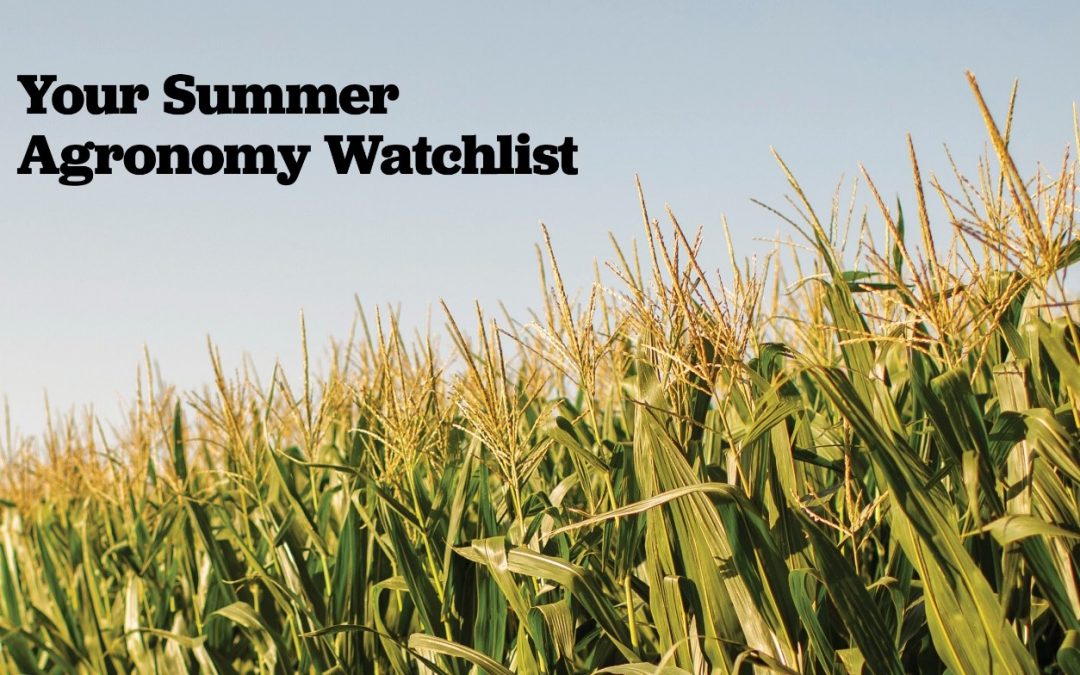I hope your summer is going well and your fields are coming along nicely! While your crops ripen, it’s important to remain vigilant to weed, disease and pest threats across the Corn Belt. Agronomic concerns are always very specific to geography, but there are some trends across the NuTech growing area we’re keeping an eye on. If you have questions or concerns about these issues in your fields, you can reach out to your NuTech representative or our agronomy team.
Weed watch
- Some of the most well-known offenders — marestail, ragweed and kochia — continue to plague farmers across the Corn Belt, and waterhemp can cause a lot of headaches mid-season. The best way to avoid in-season weed pressure is to start clean. With more typical planting conditions this year– compared to last year – this has been less of an issue.
- In soybean fields experiencing waterhemp pressure, Enlist E3® soybeans and the Enlist™ weed control system continue to be our best tools. NuTech’s Enlist E3 lineup is growing, so if you are getting glyphosate-resistant weed pressure, talk to your NuTech rep about what they recommend from our 2021 seed guide.
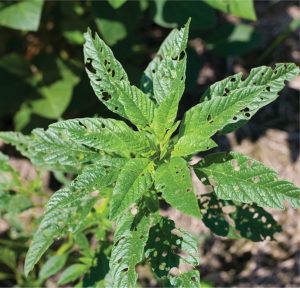
Waterhemp continues to plague many fields in the Corn Belt. Enlist E3® soybeans are a good option in areas with high waterhemp pressure.
- Mid-season weed escapes can have a couple of causes – weather or a herbicide resistance issue in the field. For resistance issues use a program approach so you’re getting different chemistries and modes of action on those weeds.
Disease watch:
We’ve got a couple of new issues in corn that we’re watching carefully:
- Tar spot has been a concern in northern Illinois, but it’s also pushing into Iowa. Like the name implies, tar spot causes raised black pustules on the corn leaf surface. It shows up later in the season, in the mid- to late-July. Tar spot kills the leaf tissue and restricts photosynthesis in the plant, leading to premature death. Unfortunately, there’s nothing you can do to mitigate tar spot once it gets going, so prevention is the best medicine. If you’re seeing tar spot this year, you’ll want to use fungicide early in the season next year. This is a fairly new disease in our industry, so we are in data-gathering mode, working to figure out which hybrids may display some resistance so we can bring forward products for those areas that see more tar spot pressure.
- Physoderma is showing up as both corn stalk rot and leaf blight, particularly in central and north central Iowa. We’re seeing it mostly on highly productive corn-on-corn acres. Physoderma leaf blight is easily confused with other diseases, including gray leaf spot and rust. You can identify physoderma leaf blight by its lateral striations across the leaves. Like other leaf blights, physoderma causes leaf necrosis and interferes with photosynthesis. Last year, physoderma stalk rot appeared late season in the first nodes at the soil line, where it seemed to mimic greensnap, until we cut the bottom of the root open and found a healthy root and crown, telling us we had physoderma. Unfortunately, there isn’t anything growers can do right now to combat physoderma. We’re working on better understanding this disease to see what germplasm lines might be more tolerant to it and whether management practices can have a mitigating effect.
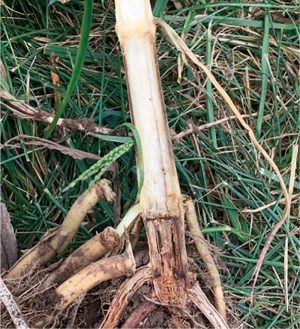
Physoderma stalk rot appearing late season can be mistaken for greensnap.
- Sudden Death Syndrome (SDS) in soybeans continues to be the biggest area of concern. Soybean cyst nematode pressure makes plants more susceptible to SDS, so the two go hand-in-hand. You can choose varieties that show tolerance to both, but know that SDS ratings can be misleading, because the only way to evaluate SDS tolerance is in the field during a season when the disease is present. At NuTech, we use our extensive local testing plots to watch for SDS and create the most accurate ratings possible from those real-world observations.
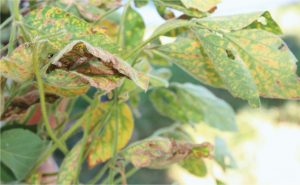
Sudden Death Syndrome (SDS) goes hand-in-hand with soybean cyst nematode infestation. Look for varieties that offer tolerance to both.
Pest watch
- We are seeing more corn earworm feeding, and have several trait technology options to address that. Make sure you are scouting for earworm from mid-August on, when it’s a big threat to kernel development.

Scout for corn earworm from mid-August on, when it can cause the most economic damage.
- Japanese beetle populations have grown over the last few seasons, though thankfully these have not been causing much economic damage. In NuTech country, Japanese beetles come on later in the season when pollination is complete ─at this stage they can’t damage the corn. We are watchful, however, to see if they begin to appear earlier, since when they can chew on the silks, they can really impact your profitability.
- In soybeans, aphids are still our number one pest to watch, but they’ve been virtually non-existent in NuTech territories over the past few seasons. Soybean aphids prefer hot, dry conditions, and while we were all pretty sick of the rain last year, the moisture did keep them down. With populations variable from year to year depending on conditions, we continue to keep a close eye on aphid pressure.
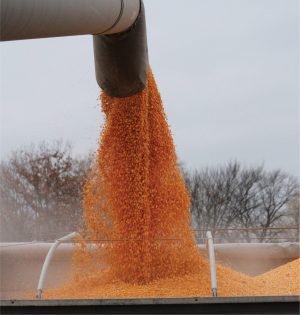
It’s not too early to think about harvest
Late summer is the right time to begin setting your corn harvest strategy. You’ll want to use a combination of factors in your evaluation—it’s not all about relative maturity. Look at ratings for stalk quality, late-season intactness and staygreen and balance those ratings with your own observations. In mid- to late-September, when plants begin shutting down, go out in the field and do pinch tests and push tests. Look at ear retention. Start figuring out your harvest schedule and prioritize fields to make harvest less hectic.
You can find more information on pests, diseases and weeds in the Agronomy Library on the NuTech website, including tips for scouting and determining economic thresholds for treatments.
Summer Corn Belt Watchlist


